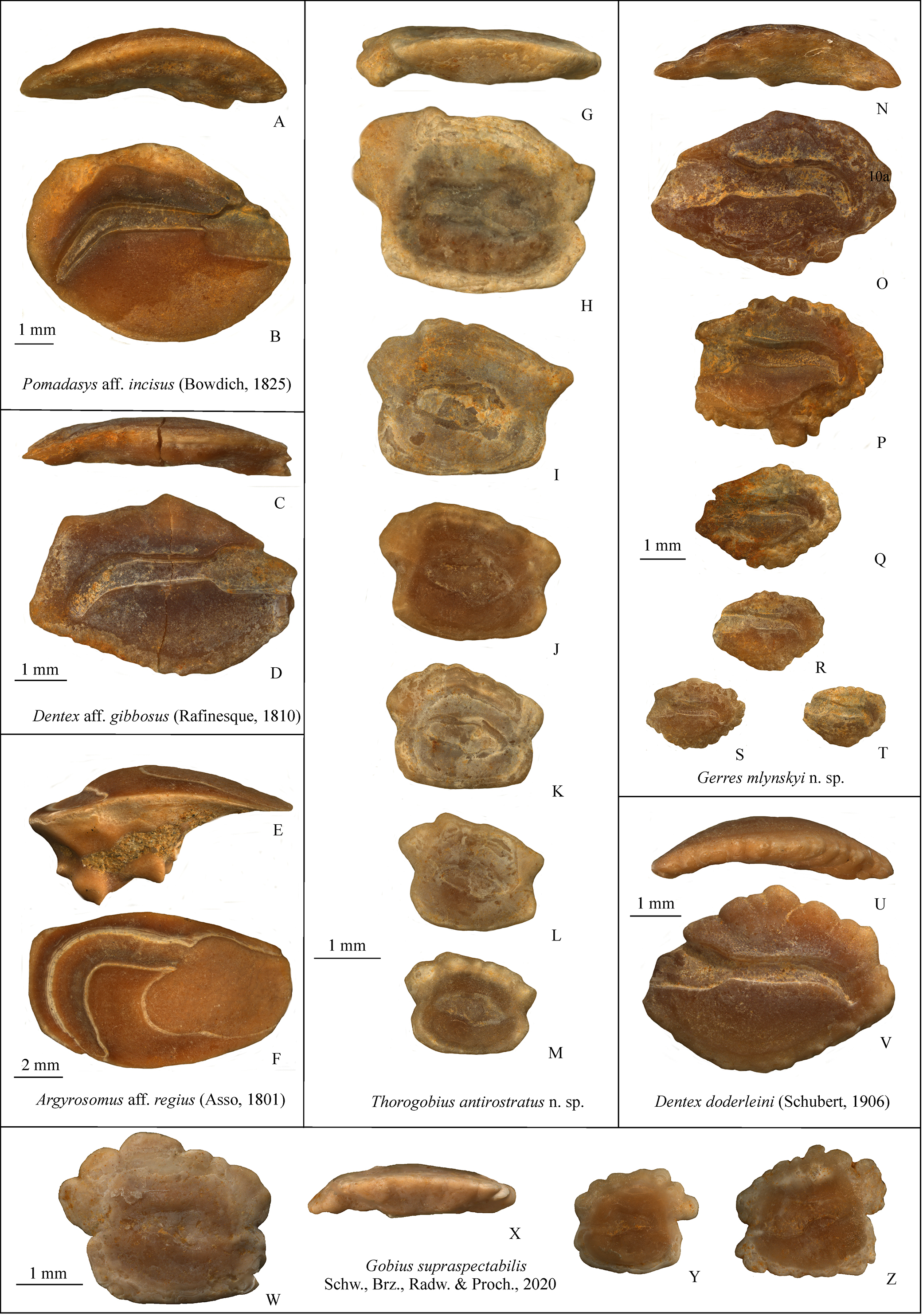FISH OTOLITHS AND FORAMINIFERA FROM THE BORSKÝ MIKULÁŠ SECTION (SLOVAKIA, MIDDLE MIOCENE, UPPER BADENIAN, VIENNA BASIN) AND THEIR PALEOENVIRONMENTAL SIGNIFICANCE
DOI:
https://doi.org/10.54103/2039-4942/15773Keywords:
Fossil fish; foraminifera; Miocene; Central Paratethys; Western Carpathians; Central Europe.Abstract
Thirty-eight otolith-based species of fishes and 41 foraminifera species have been recorded in the Borský Mikuláš-Vinohrádky section in the upper Badenian deposits in the eastern part of the Vienna Basin, in West Slovakia. Two new species of otoliths are introduced here: Thorogobius antirostratus n. sp. and Gerres mlynskyi n. sp. Among the foraminifera Biasterigerina planorbis and Elphidium crispum associated with other elphidiids, Lobatula lobatula and Cibicides crassiseptatum prevail. Overall, the family of Gobiidae dominate in the assemblage of otoliths (>90 % of specimens). Meso- and epipelagial fishes or diversified gadids and sciaenids are missing. From the molluscs, the first record of Aturia sp. in the Borský Mikuláš section is observed. Otoliths and foraminifera document a normal marine environment of well-aerated shallow water with a depth of 30-50 metres, with muddy to sandy bottoms of marine meadows and plenty of light in the subtropical climatic conditions. Several fish genera (for example Gerres) give evidence for the nearness of reef structures. There are no species (excepting Lesueurigobius vicinalis) in common with the known Lower Serravallian otolith fauna from the Eastern Paratethys. Some species from the Borský Mikuláš-Vinohrádky section can also be found in the Mediterranean Langhian-Serravallian interval and are interpreted as a relic of the lower Badenian (Langhian) fish assemblages.
Metrics

Downloads
Published
Issue
Section
License
Copyright (c) 2022 ROSTISLAV BRZOBOHATÝ, BARBARA ZAHRADNÍKOVÁ, NATÁLIA HUDÁČKOVÁ

This work is licensed under a Creative Commons Attribution-NonCommercial-NoDerivatives 4.0 International License.
The journal allow the author(s) to hold the copyright without restrictions.
Accepted 2022-03-15
Published 2022-05-27






